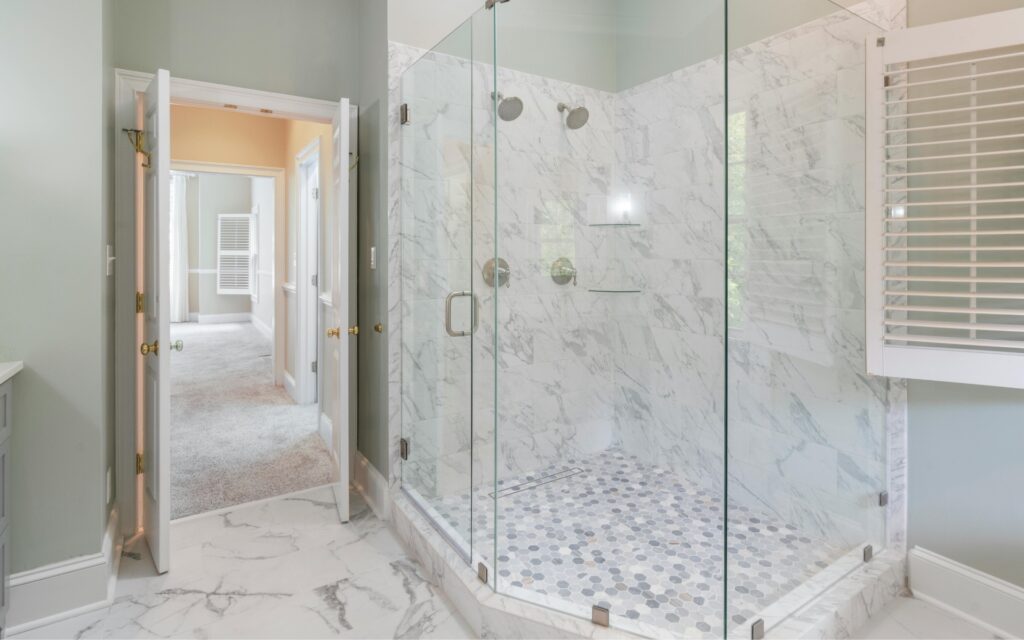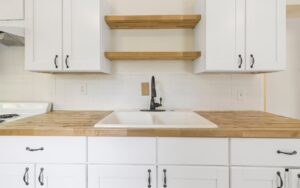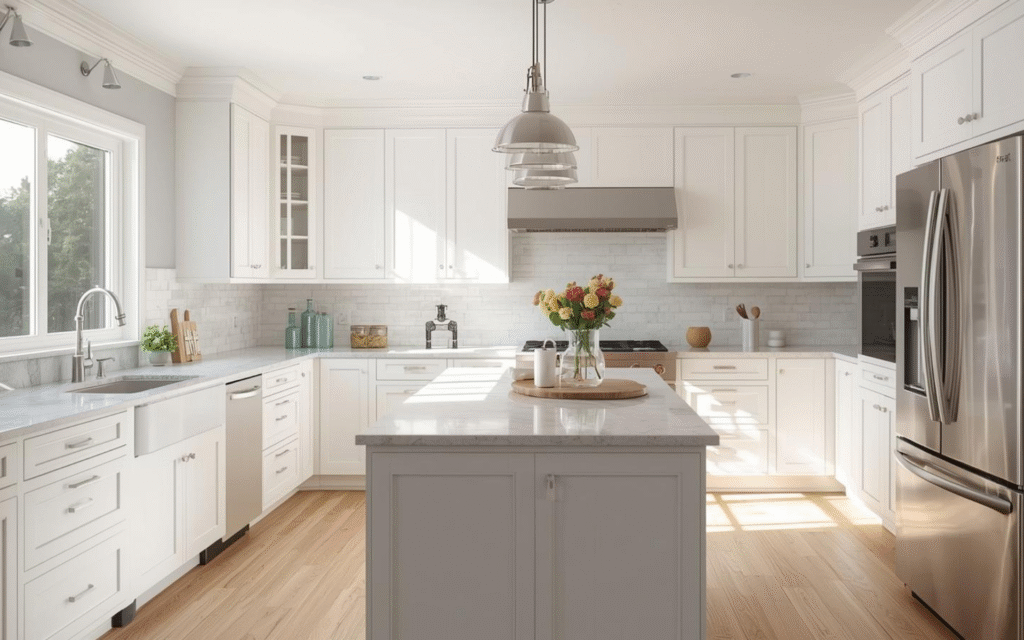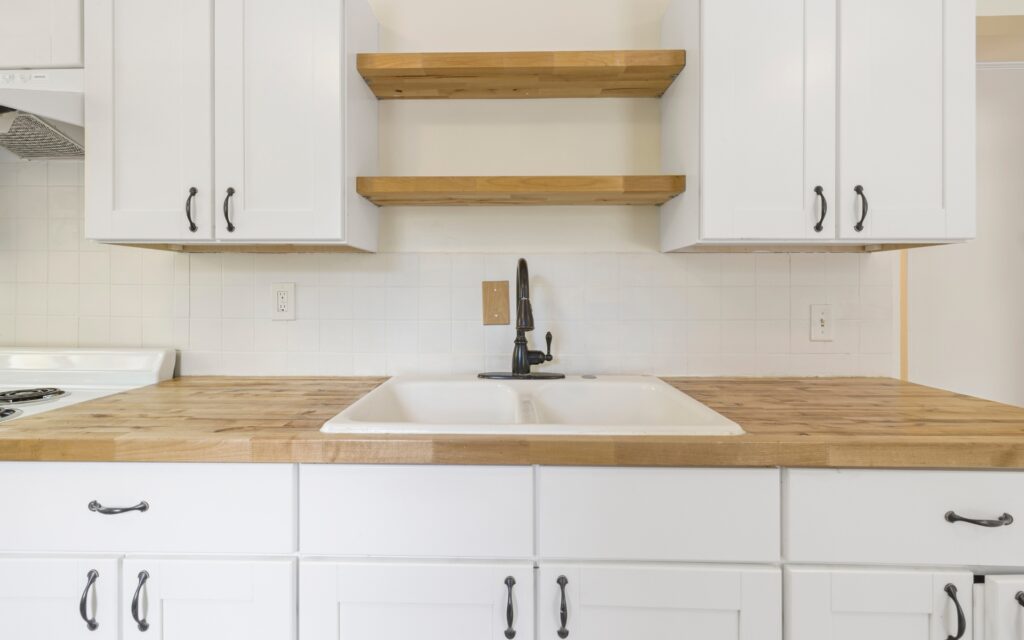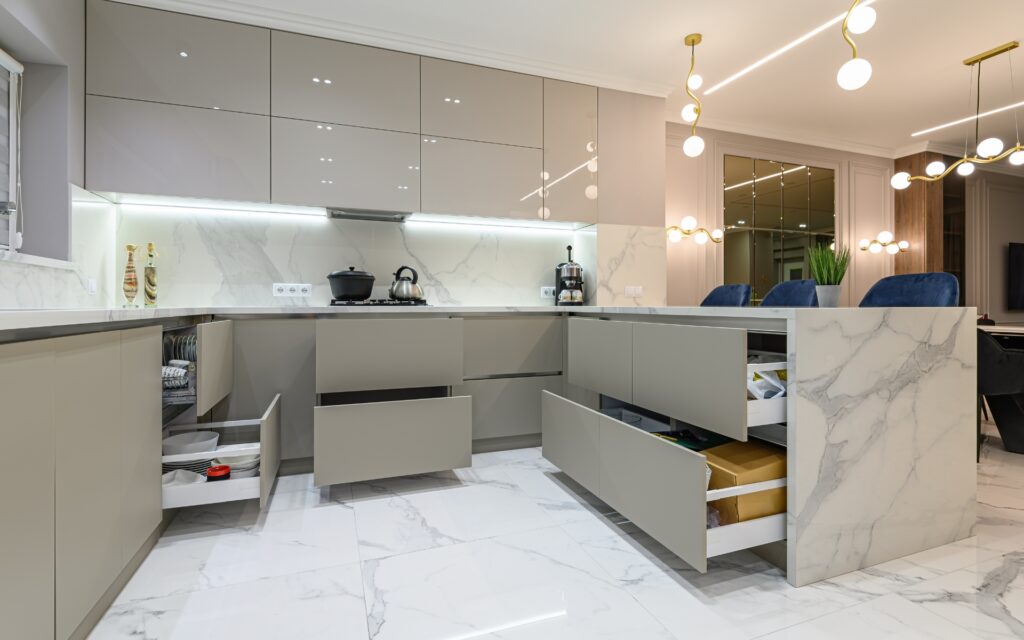A water damage in your shower doesn’t just look bad. It can compromise your entire bathroom’s structural integrity if left unchecked. From discolored tiles to soft, spongy drywall, water-damaged shower walls are a common problem that homeowners face, especially in older homes or poorly maintained bathrooms. You can tackle this issue yourself with the right approach and materials, or know exactly what to expect when hiring a professional.
According to Angi, bathroom remodeling projects that address water damage early can prevent costs from escalating into thousands of dollars for structural repairs. This guide walks you through everything you need to know about addressing water damage on shower walls, from identifying the problem to completing a bathroom repair.
What Causes Water Damage in Shower Walls
Shower walls take a beating every single day. Hot water, steam, soap residue, and constant moisture create the perfect environment for damage to develop over time.
Water-damaged shower walls typically show several telltale signs. Discoloration appears first. You might notice yellow or brown stains spreading across tiles or grout lines. Peeling paint or wallpaper signals that moisture has penetrated behind the surface. Soft spots in the wall mean the drywall underneath has absorbed water and started deteriorating. Mold growth, often black or green, thrives in these damp conditions and poses health risks beyond just cosmetic concerns.
The root causes vary. Cracked or missing grout allows water to seep behind tiles. Failed caulk around tub edges or shower doors creates gaps where moisture infiltrates. Poor ventilation traps humidity inside the bathroom, preventing walls from drying properly between uses. Leaking pipes hidden behind walls can cause extensive damage before you even notice a problem.
Assessing the Extent of Your Water Damage
Before jumping into any home repair project, you need to understand what you’re dealing with.
Start with a visual inspection. Look carefully at all tile surfaces, grout lines, and caulked seams. Check corners where walls meet the tub or shower pan—these areas are particularly vulnerable. Press gently on the wall surface in different spots. Solid walls should feel firm; soft or spongy areas indicate water has compromised the material behind your tiles or wall panels.
Signs You Can Handle It Yourself
Minor surface damage often falls within DIY capabilities:
- Small areas of cracked or missing grout
- Peeling caulk around fixtures
- Surface mold on tiles or grout (less than 10 square feet)
- Slight discoloration without structural softness
When to Call a Professional
Some situations demand expert help. If soft spots cover more than a few square feet, the drywall has likely rotted and needs replacement. Extensive mold growth, especially if it’s penetrated behind wall surfaces, requires professional remediation. Suspected plumbing leaks need a licensed plumber’s attention. Any situation involving potential structural damage to wall studs or framing is beyond typical DIY scope.
Houzz experts note that professional shower remodeling projects typically range from $2,000 to $8,000, depending on the extent of damage and materials chosen.
Gathering Materials and Tools Needed
Proper preparation makes the repair walls after water damage much smoother.
Safety Equipment
- Heavy-duty gloves
- Safety glasses
- Respirator mask (essential for mold)
- Plastic sheeting and painter’s tape
Tools You’ll Need
- Utility knife
- Pry bar
- Hammer
- Moisture meter (optional)
- Drill with mixing attachment
- Notched trowel
- Grout float
- Sponges and buckets
- Level
- Tile spacers
Step-by-Step Repair Process for Water-Damaged Shower Walls
1. Removing Damaged Materials
Turn off the water supply to your shower before starting any work. This prevents accidents and potential flooding if you encounter plumbing issues.
Remove all damaged materials carefully. For tiled walls, chip away the grout around affected tiles using a grout saw or rotary tool. Pop tiles off with a putty knife or small pry bar, working gently to avoid damaging surrounding good tiles. Cut away damaged drywall with a utility knife, extending your cuts to the nearest wall studs for a clean repair area. Dispose of moldy materials in sealed plastic bags to prevent spore spread.
Clean the exposed area thoroughly. Scrub wall studs and any remaining solid surfaces with a mold-killing solution. Let everything dry completely. Use fans and a dehumidifier to speed this process. The area must be bone-dry before you proceed.
2. Installing New Water-Resistant Materials
Measure the opening and cut your replacement material to fit. Cement backer board offers the best protection for shower wall waterproof installations. Secure it to wall studs using appropriate screws, spacing them about 8 inches apart. Make sure edges align with stud centers for solid attachment.
Seal all seams and screw holes with a waterproof membrane. Apply a generous coat to joints where new material meets old, overlapping by at least 2 inches. Don’t skimp here. Proper waterproofing prevents future damage. Cover the entire surface that will get wet, including a few inches beyond the shower area.
3. Rebuilding the Surface
For tile installations, spread thin-set mortar on the backer board using a notched trowel. Press tiles firmly into place, using spacers to maintain consistent gaps. Work in small sections so the mortar doesn’t dry before you set the tiles. Check the level frequently. Even slight slopes can cause water pooling.
After the tiles are set for 24 hours, remove spacers and apply grout. Mix it to a peanut butter consistency and press firmly into joints with a grout float. Work diagonally across tiles to pack grout completely into gaps. Wipe away excess with a damp sponge, rinsing frequently. Let the grout cure according to the manufacturer’s instructions before exposing it to water.
Seal all grout lines with penetrating sealer once fully cured. This step is crucial for preventing future water damage on shower walls. Apply caulk around all edges where tile meets tub, shower pan, or fixtures. Use 100% silicone caulk rated for bathrooms. It’s more durable and mold-resistant than acrylic alternatives.
Preventing Future Water Damage
Fixing water-damaged shower walls is only half the battle. Prevention keeps them looking great for years.
Maintenance Habits
Squeegee shower walls after every use. This simple 30-second task removes most standing water and dramatically reduces moisture exposure. Run your bathroom exhaust fan during showers and for at least 30 minutes afterward. If you don’t have a fan, crack a window to promote air circulation.
Inspect grout and caulk quarterly. Look for cracks, gaps, or signs of separation. Small problems are easy to fix. Waiting lets them become expensive repairs. Reseal grout lines annually. Even quality grout is porous and needs a protective sealer to resist moisture penetration. Clean regularly with mildew-resistant cleaners to prevent mold before it establishes.
Upgrading Your Shower’s Waterproofing
Consider installing a shower pan liner if you’re doing extensive work. This rubber membrane under your shower floor catches water that penetrates tiles before it reaches the subfloors. Upgrade to frameless glass doors instead of curtains. They seal better and look cleaner. Install a higher-quality exhaust fan if yours seems weak. Proper ventilation prevents the humidity that causes most water damage.
Apply an additional waterproof membrane in high-risk areas. Corners, edges, and anywhere plumbing penetrates walls deserve extra protection. The small upfront investment prevents massive headaches later.
When DIY Isn’t Enough
Some situations absolutely require professional help with home repair projects.
Structural damage beyond wall surfaces affects your home’s safety and value. Compromised wall studs, joists, or framing need expert evaluation and repair. Extensive mold remediation, especially if it’s spread into ventilation systems or covers large areas, requires specialized equipment and training. Complex plumbing issues causing the water damage need licensed plumbers who can properly diagnose and fix leaks.
Insurance claims often mandate professional documentation and repairs. Check your policy before starting work. Doing unauthorized repairs might void coverage. Lack of confidence or skills doesn’t make you inadequate. Knowing your limits prevents costly mistakes. A botched repair costs more to fix than hiring professionals initially.
Address Water-Damaged Shower Walls Today
Small problems caught early rarely require major intervention. Regular inspections, quick fixes to grout and caulk, and proper ventilation prevent most serious damage. When repairing walls after water damage becomes necessary, you now have the knowledge to either tackle it yourself or communicate effectively with contractors about what needs to be done.
Your shower is one of the hardest-working spaces in your home. Giving it the attention and maintenance it deserves pays dividends in comfort, safety, and home value. Take action at the first signs of trouble, and you’ll avoid the stress and expense of major shower remodeling projects down the road. Visit CabinetLand showroom to explore options, or reach out today to discuss your shower repair or remodeling needs.

